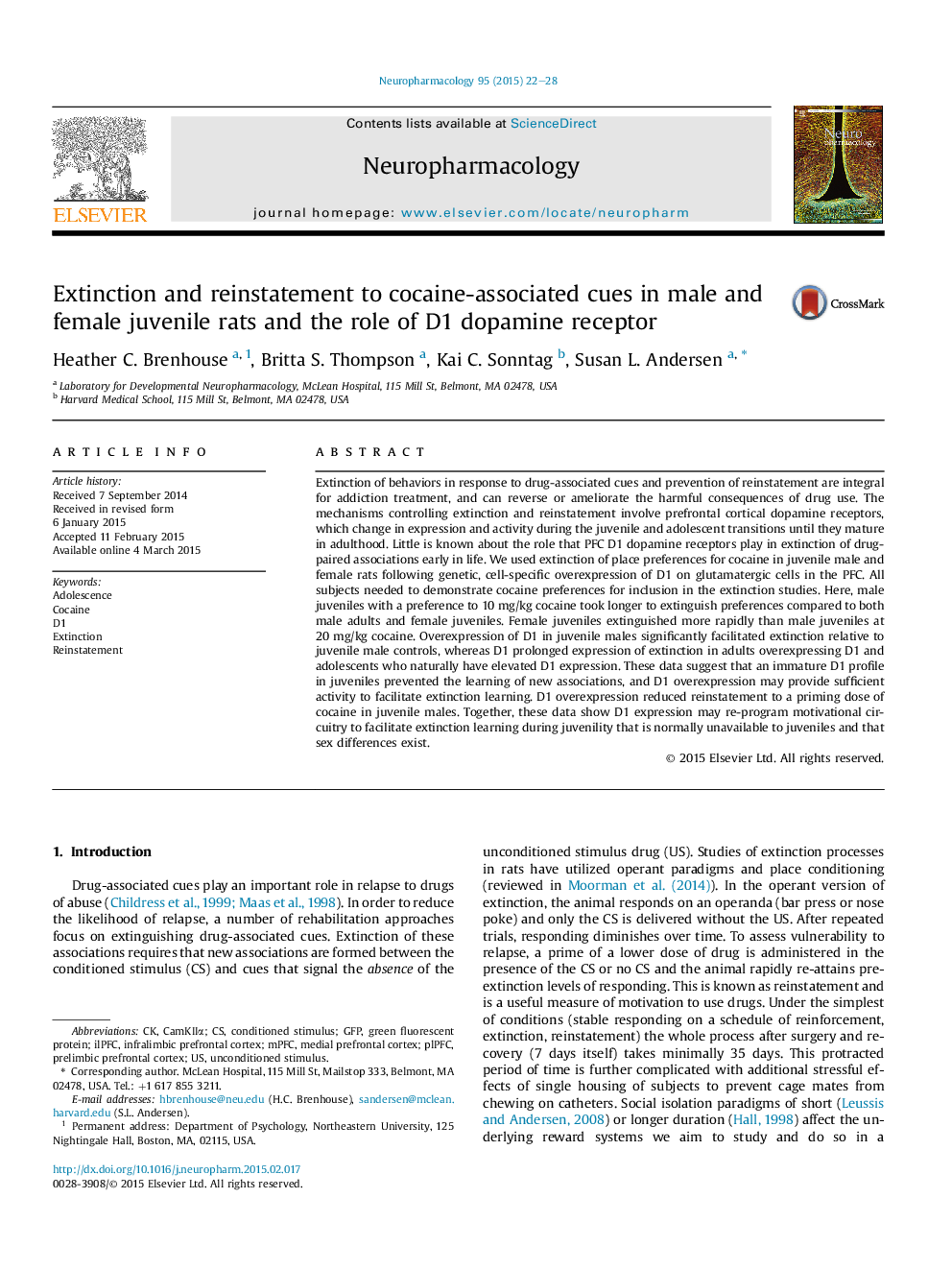| Article ID | Journal | Published Year | Pages | File Type |
|---|---|---|---|---|
| 5813645 | Neuropharmacology | 2015 | 7 Pages |
Abstract
Extinction of behaviors in response to drug-associated cues and prevention of reinstatement are integral for addiction treatment, and can reverse or ameliorate the harmful consequences of drug use. The mechanisms controlling extinction and reinstatement involve prefrontal cortical dopamine receptors, which change in expression and activity during the juvenile and adolescent transitions until they mature in adulthood. Little is known about the role that PFC D1 dopamine receptors play in extinction of drug-paired associations early in life. We used extinction of place preferences for cocaine in juvenile male and female rats following genetic, cell-specific overexpression of D1 on glutamatergic cells in the PFC. All subjects needed to demonstrate cocaine preferences for inclusion in the extinction studies. Here, male juveniles with a preference to 10Â mg/kg cocaine took longer to extinguish preferences compared to both male adults and female juveniles. Female juveniles extinguished more rapidly than male juveniles at 20Â mg/kg cocaine. Overexpression of D1 in juvenile males significantly facilitated extinction relative to juvenile male controls, whereas D1 prolonged expression of extinction in adults overexpressing D1 and adolescents who naturally have elevated D1 expression. These data suggest that an immature D1 profile in juveniles prevented the learning of new associations, and D1 overexpression may provide sufficient activity to facilitate extinction learning. D1 overexpression reduced reinstatement to a priming dose of cocaine in juvenile males. Together, these data show D1 expression may re-program motivational circuitry to facilitate extinction learning during juvenility that is normally unavailable to juveniles and that sex differences exist.
Keywords
Related Topics
Life Sciences
Neuroscience
Behavioral Neuroscience
Authors
Heather C. Brenhouse, Britta S. Thompson, Kai C. Sonntag, Susan L. Andersen,
